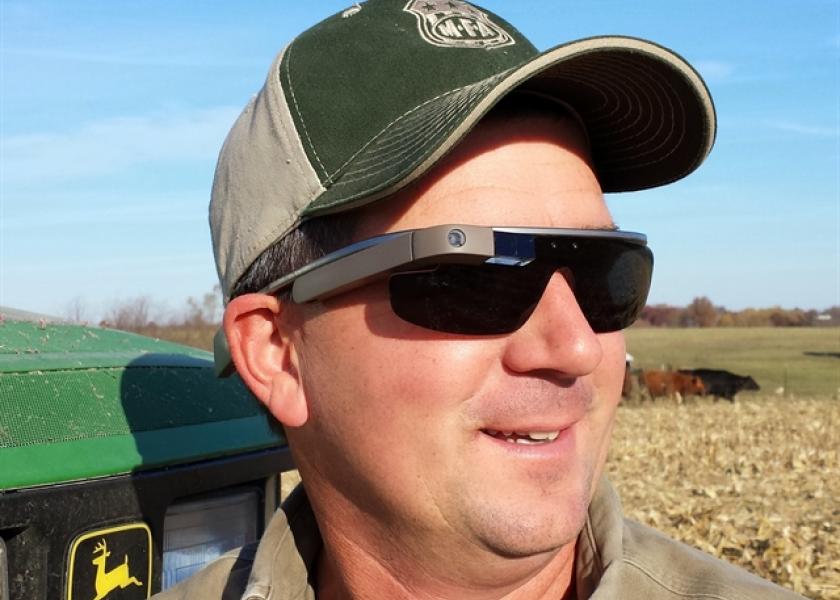Smart Glasses Share Vision

Smart glasses could be the next wave of on-farm technology
Technology has made communication simpler over the years. Alexander Graham Bell likely would have never imagined the telephone would evolve from a system of lines run by an operator to a cellular-based system connecting people across continents.
Now, the next movement of communication improvements looks to be wearable technologies. These include a plethora of devices, but the most interesting for farmers may be smart glasses.
“For agricultural professionals that need to work hands-on in multiple environments, a device like emerging smart glasses or the wearable category are going to be 100% useful in agriculture globally,” says Bruce Rasa, CEO and founder of TekWear, LLC.
Rasa’s company has been focused on creating a patent pending dashboard system for smart glasses and other wearable technologies specifically for agriculture.
Smart glasses allow operators to work hands-free while doing another task. “Whether that is inspecting an animal or machinery, it allows them to stay engaged in the task they were working on without stopping to interrupt their work to record their information,” Rasa say.
Many producers and agriculture professionals spend hours writing down or typing out what they’ve done the past day. Smart glasses would help eliminate time spent in the office doing sometimes trivial tasks.
Rasa believes smart glasses will be more of a specialty tool in agriculture that is more vertical in use. “It is not a horizontal Swiss army knife for everybody. It is also itself not a smart phone. It is not a universal tool that everyone would use.”
While the current use of smart glasses may be limited, there is application potential for producers in remote areas or during times when farmers are in high demand, such as planting or harvest.
For instance, a farmer could be working on a piece of machinery while talking to a service tech who is looking at what you are seeing in an office across the globe.
“That is absolutely one of the favorite use cases,” Rasa relates. “Most people think of it as ‘ask an expert’ or get a second opinion.”
Training a new employee could be another practical use for smart glasses because they could be walked through different, actual farm tasks in real-time.
The marketplace for smart glasses and wearable technology is still young, however.
“Billions of dollars have been invested in the past 18 months in the category of wearables as the next
potential wave of next-generation mobile solutions,” Rasa says.
Google Glass, the emerging leader in the category, announced in January it is halting sales of their beta version of the product. “It has basically graduated from a research division, from frankly the wild and crazy public beta of the last two years, and now, it has gone into their product group,” Rasa says.
“It is an extremely exciting time. It is still new, and it is absolutely not for everybody,” Rasa explains. “We think it is the next wave of mobility in agriculture.”







